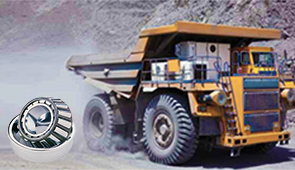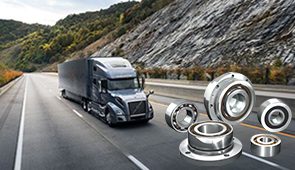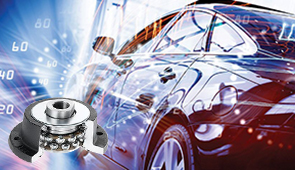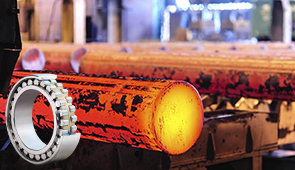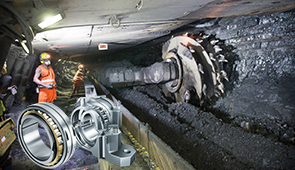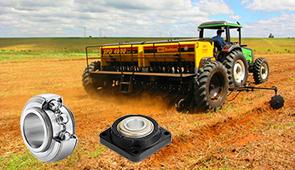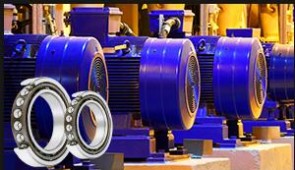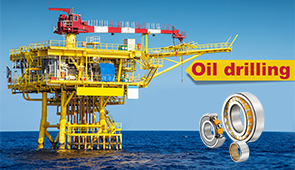Understanding Spalling: Causes and Effects on Bearing Damage
Bearings are critical components in countless mechanical systems, ensuring smooth operation and minimizing friction in moving parts. However, even the most robust bearings are susceptible to wear and damage over time, with spalling being one of the most common and concerning issues. Spalling, a process where material fragments or flakes off the bearing surface, can lead to catastrophic failures if left unchecked. This article will explore the root causes of spalling, its effects on bearing performance, and why early detection and prevention are key to mitigating its impact. Whether you’re maintaining industrial machinery or optimizing rotating equipment, understanding spalling is essential for extending bearing life and enhancing machinery reliability.
What Causes Spalling in Bearings?
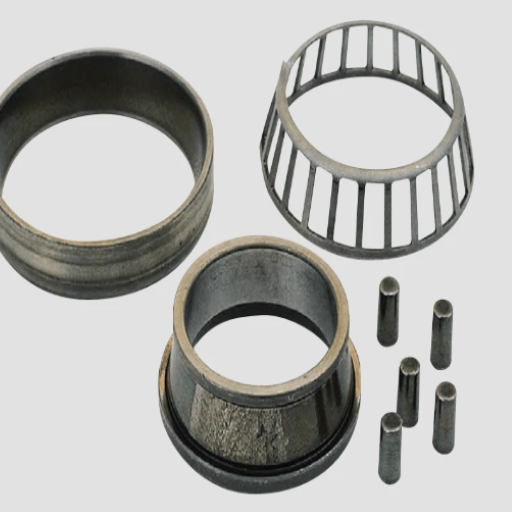
How Do Rolling Elements Contribute to Spalling?
The rolling components in a bearing are quite significant in the mechanics of spalling. Bowls or rollers are normally used as these components, and they undergo repetitive strain cycles due to circulation over the raceway when it is loaded. Eventually, this repeated stress can surpass the material’s fatigue threshold, which initiates the formation of cracks under the surface. These subsurface cracks are likely to break under high-contact rolling pressure, and will result in tiny fragments of material breaking after some time, this is referred to as spalling.
Improper lubrication, contamination, and misalignment can amplify stress distribution. Lesser lubrication leads to an increase in metallic contact, which causes enhanced friction, heat, and material fatigue. Further still, outside stressors such as dirt can be stressors on the rolling elements and raceways. Lastly, misalignment can lead to the change of focus for load concentration, which in turn increases the chances of spalling when placed under nonuniform stress.
Also, the stresses placed on rolling elements are increased due to certain operating conditions, such as excessive rotational speeds or loads greater than rated. These conditions worsen wear and fatigue, thereby reducing the lifespan of the bearing and underscoring the need for precise operational limits. Gaining insights into these factors helps diagnose spalling earlier and remove corrective actions such as advanced manufacturing, better lubrication, and tighter maintenance to control failure risks.
Impact of Improper Lubrication on Spalling Damage
Inadequate lubrication maintenance practices still play a crucial role in the early stages of rolling element bearing spalling. Lubrication’s primary role is to allow metal parts to rotate with each other rather than rubbing against each other. The protective film that should be formed gets neglected due to poor quality oil, improper viscosity, or contamination, and thus results in surface fatigue, which furthers boundary lubrication. As a result, these phenomena give rise to microcracks, which further progress under cyclic loading.
Around 50% of bearing failures are directly associated with lubrication issues, this fact portrays the severity of care needed when attaching or applying a lubricant. High operating temperatures can lead to excessive wear and tear on lubricants. Furthermore, water as well as particulate substances serve as contaminants that change the properties of lubricants, thus resulting in abrasive conditions that further facilitate surface damage.
To overcome these issues, sticking to rigid lubrication instructions as well as employing sophisticated synthetic lubricants intended for high-load and speed applications is necessary, alongside high-speed monitoring systems. These steps enhance the life of the bearings while also ensuring reliability by avoiding failure linked to spalling. This helps address maintenance challenges while mitigating risks using technical innovations.
Can Misalignment Lead to Bearing Failure?
Certainly, misalignment is something that can directly lead to bearing failure, shorten their lifespan, and affect the efficiency of the entire system. If it is misalignment, the bearing is subjected to, causing uneven load distribution throughout the rolling elements. This causes harsh stresses on certain parts of the bear components, leading to aging. So much imbalance in stress load leads to deterioration, such as spalling, flaking, or even cracking.
Looking at the terms from a theory perspective, the type of bearing affects the misalignment. For example, angular misalignment is something that spherical roller bearings easily tolerate, unlike cylindrical or ball bearings, which do not tolerate deviation. Standard practices say that a small 1-degree deviation in angle misalignment with a bearing put into sensitive applications will significantly drop bearing performance. Misalignment in itself caps many problems, but when you add heat and vibration, then it becomes something more due to the extra stress on the lubrication system, which further increases the failure risk.
To fix the problem, high-tech tools like laser alignment systems and real-time vibration analysis are used to find misalignment early in the operational phase. Moreover, bearing damage and potential failure due to misalignment are maximally avoided by following OEM-level maintenance and installation precision.
How to Identify Bearing Spalling?
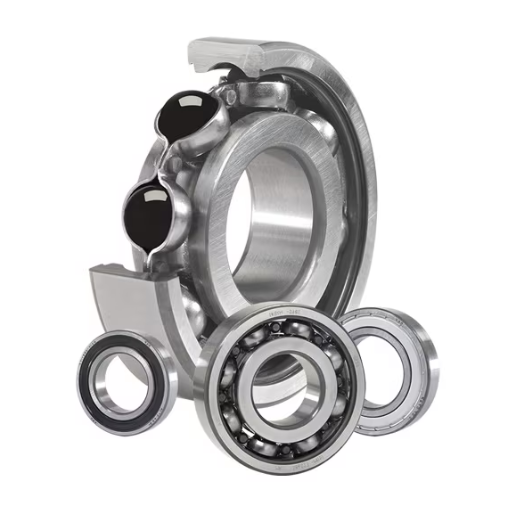
Visible Signs of Spalling Damage on Rolling Element and Raceway Surfaces
Spalling damage on rolling elements and raceway surfaces can usually be detected through visual inspections and analysis. A bearing’s rolling elements or raceways may exhibit pitted or flaky portions on the surface, which are often the first signs of damage. These worn-out areas are a product of localized stress, material fatigue, and subsequently, material removal. Advanced spalling can lead to surface evenness, resulting in irregular rolling, increased operational vibrations, noise, and imbalances.
In addition to these symptoms, abnormal operating temperature and irregular lubricant wear patterns may offer insight into the spalling phase of the device. Under magnification optics, and endoscope cameras, one can observe the spalled areas unveiling cracks far deeper than the surfaced defects. With the use of any real-time condition monitoring systems paired with vibration signature analysis, exact quantitative evidence confirming spalling damage through amplitude, frequency pattern, and associated harmonic vibration changes can be obtained from surface deformities.
Using predictive maintenance frameworks, spalling not only can be detected at an early stage but also at a categorized severity level, helping operators untimely reduce equipment downtime and prolong the operational lifespan of bearings.
Understanding Pitting and Flaking on Bearing Surfaces
Pitting and flaking are two types of surface fatigue that can drastically affect a bearing’s efficiency and service life. Pitting is commonly manifested as a series of small crater-like depressions on the bearing surface, referred to as a pit. These pits are formed due to contact stress cycles surpassing the bearing material’s endurance limit. In bearing surfaces, over time, with these stress concentrations, surface deterioration begins by removing material, which leads to cavities. Flaking is caused due to the removal of thin layers or flakes off the bearing surface, commonly due to progressive pitting along with largely sustained underloaded and poorly lubricated conditions.
Pitting starts as a result of hydraulic microcracking due to subsurface sheer stress; these microcracks propagate until they reach the surface, occurring as visible pitting. Flaking tendencies usually occur as palliative damage or disproportionate film failure, resulting in increased wear. Some key performance indicators, including destructive vibration and non-destructive acoustic kapnometrics, aid in the identification of early symptoms related to pitting and flaking. If these warning signs are ignored, frictional resistance, operational temperatures to the system, and risk of total bearing damage may substantially increase.
Change in any operational component of a structure may result in unrestricted balance becoming unstable, henceforth accurate assessment needs implemented advanced preventative corrective change policy can increase operational dependability and eliminate glitches without incursions work time change pessimistic downtime estimation.
Difference Between Spalling and Other Surface Damage
Spalling is a form of surface roughness where material pieces are broken off from a more extensive surface due to stress. Spalling is associated with rolling-contact fatigue (RCF) found in gears and bearings among other things. Mechanical failure is preceded by surface degradation, most often caused by exposed, small pits or flakes that build up over time.
With scoring, fretting, or abrasive wear, other types of surface damage have different primary causes and distinct appearances. Insufficient lubrication or contaminants lead to deep scratches or grooves, which define scoring. Localized oxidation and wear are caused by oscillatory motion between contact surfaces under load and are known as fretting damage. Abrasive wear describes the action of hard particles or trapped contaminants between two sliding surfaces, which continually erode the surface.
The main defining characteristic of spalling is how it progresses as a result of tracery crack initiation due to subsurface loading and cyclic loads on the material over time, which results in fatigue. Other surface-level damages are more or less superficial and result from environmental factors interacting with the surface of the structure, in addition to mechanical processes. This also helps avoid unnecessary designs and changes for potential future deployment. The use of advanced diagnostic machinery tools as surface profile measuring devices and non-destructive testing (NDT) methods, helps separate these damage types, enabling efficient long-term operation.
What Are the Types of Bearing Failures?
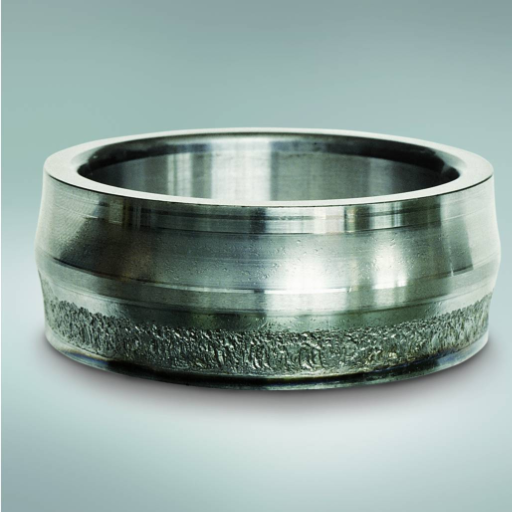
Understanding Brinelling: True vs. False
Brinelling is one of the most common phrases in bearing failure analysis, and it defines an impermissible alteration on the raceways due to excessive static or dynamic loads. True brinelling takes place when the load put forth surpasses the yield strength of the bearing material. The outcome is indentations where the raceway sits – physically, it seems to undergo deformation as improvements are made. Not only are these impressions easily identifiable when inspection is conducted, but they are also marked in a typical pattern that rolling elements get spaced in due to their uniform spacing. Shocks from external forces, excessive axial loads, and mishandling during installation tend to cause true brinelling.
Things such as excessive loads come alongside false brinelling, which results from Wear caused by Vibration rather than Brinelling itself. This phenomenon occurs in scenarios where very small oscillation or movements happens with the motionless bearing surfaces. The careless delrand metal flowing bolange has induilu-decaled siliato, slite onmered and over time hisith the movement displaces stanttoidal bolster dila amount to band n metal contact. This kind of brinning can be seen in strided machinery sections where transport vibration or slight moving oscillations during the service are causing brinelling.
Recognizing the differences between these two types of brinelling is important for accurately diagnosing and preventing failure. Though true brinelling requires setting appropriate operational and installation load limits, false brinelling requires measures like improved lubrication, vibration isolation, or reduced rest time in high vibration environments. Differential diagnosis of these failures alongside careful maintenance planning to sustain bearing reliability can be executed through meticulous maintenance examination employing advanced optical microscopy or profilometry tools.
Impact of Corrosion on Bearing Life
Corrosion causes the most damage to bearings by reducing their lifespan and effectiveness. Chemical interaction with metals leads to the corrosion of bearings due to the presence of moisture, acids, and pollutants. This generally results in pitting, fretting or, spalling of raceways and rolling elements. The mechanical damage caused by corrosion breaks the surface of the raceway which increases friction, wear and overloads the entire bearing system.
Burns up to1266 degrees dramatically lessen the life of bearing to upto 50%. Even a minute amount if water, not more than 200ppm, in lubricants greatly promotes corrosive actions. Change from lubricant into abrasive materials like oxidized powder forms lead to additional wear. The most harmful factor to wear is bearing capacity. Pitted parts are damaged sooner due to fatigue, and structural value.
To prevent corrosion, high-quality protective lubricants, either synthetic or mineral-based, with anti-corrosive compounds, should be used. Apart from this, sealing methods for contaminant intrusion and materials such as stainless steel or ceramic bearings that are chosen for corrosive environments should be used. Prolonged bearing life is achieved through complete maintenance procedures, regular inspection for corrosion or lubricant contamination, controlling pressure, temperature, and other conditions in the environment, and actively managed systems. With these metrics in place, corrosion control is significantly easier, and mitigating challenges gets much simpler.
How to Prevent Spalling in Bearings?
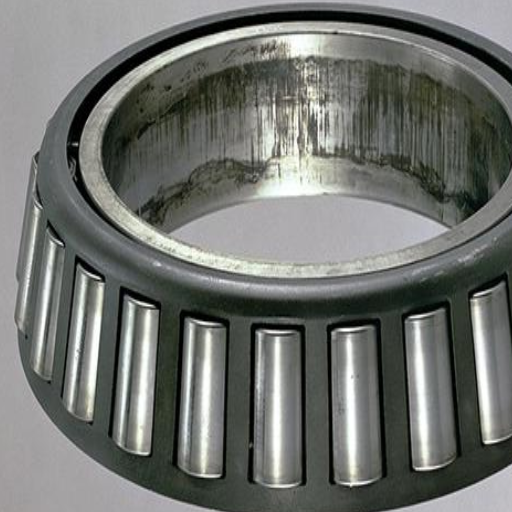
Importance of Proper Lubrication and Operating Conditions
Successful prevention of spalling, a common failure of bearings due to surface or subsurface fatigue, requires proper lubrication and optimal operating conditions. By employing lubricants, friction between the rolling elements and the raceways is greatly reduced. This maximizes the barrier and reduces thermal energy generated, wear and tear, as well as friction at the same time. Substantial reduction in bearing lifespan can be prevented by utilizing the correct type of lubricant, be it oil, grease, or even a solid lubricant, tailored to the specific application and load conditions. For example, low viscosity oils are preferred in high-speed applications because they offer low resistance, while high viscosity greases are ideal for low-speed, heavy load scenarios.
Bearings also have specific operating conditions like temperature, alignment, and contamination controls, which are equally critical. Excessive operational temperatures result in a high rate of lubricant breakdown, which in turn, negatively affects lubrication performance and increases the chances of spalling. Using cooling systems or heat-dissipating materials helps maintain optimal temperature ranges, alleviating these problems. Inaccurate bearing seating or misalignment also generates uneven load distribution, which contributes to higher stress concentration levels on rolling elements. Contaminants like water, dirt, or corrosive particles also affect the lubricant and bearing surfaces, which leads to a loss of structural integrity. Employing high-quality seals and consistently checking lubricants for contamination or wear can help deal with this problem.
Strictly controlling the lubrication procedures and operating conditions allows engineers and maintenance personnel to avert spalling, which improves performance, decreases downtime, and trims overall maintenance costs.
Correct Mounting to Avoid Misalignment
To maximize the life span of machinery components, proper alignment of the motors’ parts is fundamental to mounting them for optimum machine efficiency. The undersized loading of the bearing leads to improper seating on the shaft, housing, or the axis of rotation does not conform to the expected alignment. Maintaining proper alignment is critical, as improper alignment is likely to induce an increased rate of wear and tear, unwanted vibrations, heat of rotation, and rapid degenerative changes within the bearing and surrounding parts.
Improper and unattended misalignment can result in a myriad of issues, like increases to operating costs and overly burdensome maintenance schedules. For optimal efficiency all tools and steps in the mounting guide have to be strictly followed. Cast iron housing must be precisely machined to ensure both the shaft and housing elements to conform to rigid engineering tolerance limits. To allow for firmer joint integrity, modern techniques employing hydraulic or thermal mounting tools aid in providing adequate, further uniform pressure.
Fulfilling these recommendations alongside implementing the steps provided will increase system reliability. Moreover, condition monitoring and realignment checks should be added to maintenance schedules to resolve further developing issues.
Minimizing Hard-Particle Contamination in Bearings
Early bearing failure in terms of wear and friction is often caused by damaged particles as debris in moving parts or bearings.
- Sealing Systems: Close-fitting protective elements such as labyrinth seals and lip contact seals effectively keep seals safe safeguarding from damage. This is particularly important in places where dust, dirt, or other abrasive materials are ubiquitous.
- Lubrication: The impact of contamination can be greatly reduced with effective lubricant application. To achieve this, use of guard sealed pedestals and block lubrication set up centralised lubrication offered which prevents the introduction of lubricants through foreign bodies embedding themselves on rolling bearing surfaces. Moreover, including lubricants with dispersing particles esters lessen damage sustained.
- Filtration: The contamination of particles into bearings is hindered by the incorporation of high efficiency pupils into adjacent machines.
- Material Selection: Because bearings undergo abrasive material continuously rotating around them for pieces of machinery bearing shaft parts prone to wear, extending life significantly, replacing steel with ceramics or hardened steel alloy follows through. The riser incorporates materials due to steel surrounds, which are steel.
- Condition Monitoring: Using vibration analysis, emission sensors, and oil particle counters allows for early detection of damage due to contamination. This information, when used alongside maintenance scheduling, ensures that repairs and replacements are done promptly.
When these approaches are implemented, the risk of contamination by hard-particles is reduced significantly. This, in turn, improves bearing functionality, decreases costs, and increases overall equipment lifespan.
What Are the Long-Term Effects of Spalling Damage?
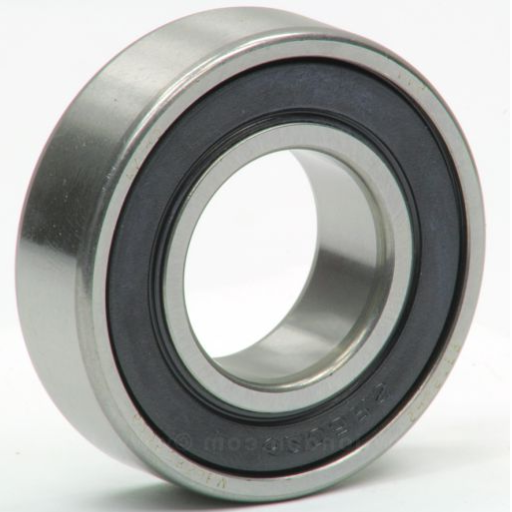
Impact of Spalling on Bearing Life and Fatigue Life
Spalling affects the bearing life and the overall fatigue life of the component. Spalling takes place when the surface coats or materials at the top or beneath the surface of the bearing raceways develop cracks as a result of being in contact with high-stressed regions, and in doing so, end up being damaged due to high contact stresses or contamination. This deterioration leads to load distribution that is not uniform, which results in uneven operational vibrations, elevated concentric stress, and a decline in operational life.
The existence of spalling can radically increase the deterioration of bearings, the magnitude of which comes down to the operational state and the severity of the damage. The persistence of spalling, which in most cases is caused by fatigue failure, is progressive and results in a cascade of microfractures that lead to a weakened structure of the bearing. Weakening the ability of the bearing to withstand loads being subjected to it over time, which culminates in a catastrophic failure if not constantly checked.
Implementing advanced monitoring technologies such as vibration analysis and ultrasonic detection, combined with sophisticated material treatment processes like carburizing and induction hardening, assists in mitigating the risks that spalling poses. Employing proper lubrication practices that incorporate anti-wear agents significantly reduces the nutrient fatigue life and mitigates the primary stages of micro-damage that often catalyze spalling. This emphasizes the need to apply sophisticated bearing monitoring and maintenance system methodologies throughout the lifespan of the bearing.
Understanding Progressive Damage in Bearings
The destructive progression in bearings is caused by the aggravating interplay between operational loads, material wear, and insufficient lubrication. Following spalling, the neighboring material structures begin to experience further stress concentration; this accelerates the preexisting cracks and additional surfaces giving rise to further changes. This results in uneven load transfer and vibrations which tend to act as destabilizers to the bearing system.
Fatigue damage in the material due to cyclic loading is pivotal to the progressive damage. Repetitive loads over a long time tend to create sub-surface voids in the material due to repetitive stress, especially in regions where the stress is most concentrated; these voids progressively enlarge with time and surface out of the material, which leads to loss of clear-dimension material. Environmental factors, such as being contaminated by dust or supplied with eroding agents or materials, put further stress on inhibiting the application of weak surfaces, increasing the breakdown in structure caused by weakening of the material at specific locations.
To mitigate the impact of progressive damage, the use of advanced predictive maintenance tools is vital. Vibration analysis, ultrasonic testing, and thermal imaging permit the deviation monitoring before any structural damage takes place. The application of cyclic loading resistant coatings, such as diamond-like carbon (DLC) or advanced ceramics, has been shown to significantly improve resistance against progressive damage. When combined with careful distribution of the load and lubrication standards, these measures will enable prolonged operational and durable efficiency of the bearings.
Frequently Asked Questions (FAQs)
Q: What is spalling in the context of bearing damage?
A: Spalling is a mode of damage that involves the flaking or breaking off of material from a bearing’s surface, often due to fatigue spalling. This damage is progressive and can lead to more severe issues within the bearing.
Q: How does spalling affect the performance of a bearing?
A: Spalling affects the performance by creating wear marks and potential discoloration on the bearing surfaces, which can lead to increased friction and ultimately result in bearing failure. Spalling damage is progressive and can significantly reduce the lifespan of a bearing.
Q: What are the common causes of spalling in bearings?
A: Common causes include improper mounting, poor lubrication, hard-particle contamination in the bearing, and bearing material fatigue. These factors contribute to the initiation and progression of spalling and pitting on the races and rolling elements of the bearing.
Q: How can improper mounting lead to spalling?
A: Improper mounting can cause plastic deformation of the bearing components, leading to stress concentrations that promote fatigue spalling. Ensuring correct installation procedures are followed is crucial to prevent this type of damage.
Q: What role does lubrication play in preventing spalling?
A: Proper lubrication is essential to minimize friction and wear. Poor lubrication can lead to increased heat and stress within the bearing, accelerating the onset of spalling. Maintaining adequate lubrication helps ensure a reliable bearing performance.
Q: Can spalling lead to secondary damage in bearings?
A: Yes, spalling can lead to secondary damage such as pitting and further material loss. The progressive nature of spalling damage can exacerbate existing issues and create new problem areas within the bearing.
Q: How does spalling differ from other types of bearing damage, like false brinelling or true brinelling?
A: Spalling is typically caused by fatigue and wear over millions of load cycles, whereas false brinelling and true brinelling are often caused by vibration and static overloading, respectively. Although their causes and long-term effects differ, all can lead to bearing damage.
Q: What maintenance practices can help prevent spalling in bearings?
A: Regular inspection for wear marks, maintaining proper lubrication levels, and ensuring bearing steel cleanliness are key practices. Additionally, monitoring for signs of hard-particle contamination and following proper installation procedures can help prevent spalling.
Q: How can contamination contribute to spalling in bearings?
A: Hard-particle contamination in the bearing can create abrasive wear, leading to surface damage and initiating spalling. Keeping the bearing environment clean and free of contaminants is crucial for preventing this type of damage.
UCTH213-40J-300 with Setscrew(inch)
CNSORDERNO: Normal-duty(2)
TOGN: UCTH213-40J-300
SDI: B-R1/8
SD: 2 1/2
UCTH212-39J-300 with Setscrew(inch)
CNSORDERNO: Normal-duty(2)
TOGN: UCTH212-39J-300
SDI: B-R1/8
SD: 2 7/16
UCTH212-38J-300 with Setscrew(inch)
CNSORDERNO: Normal-duty(2)
TOGN: UCTH212-38J-300
SDI: B-R1/8
SD: 2 3/8
UCTH212-36J-300 with Setscrew(inch)
CNSORDERNO: Normal-duty(2)
TOGN: UCTH212-36J-300
SDI: B-R1/8
SD: 2 1/4
UCTH211-35J-300 with Setscrew(inch)
CNSORDERNO: Normal-duty(2)
TOGN: UCTH211-35J-300
SDI: B-R1/8
SD: 2 3/16
UCTH211-34J-300 with Setscrew(inch)
CNSORDERNO: Normal-duty(2)
TOGN: UCTH211-34J-300
SDI: B-R1/8
SD: 2 1/8









